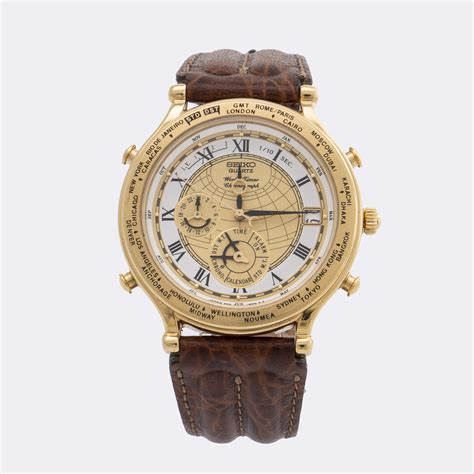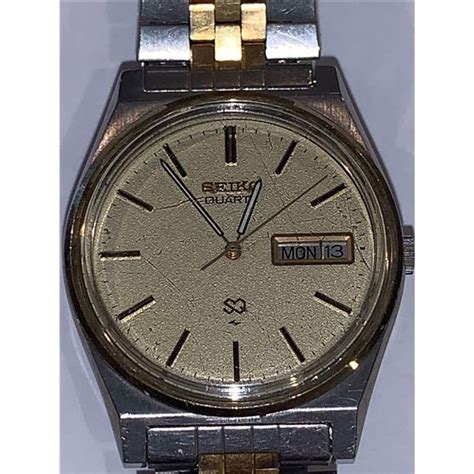how did rolex survive the quartz crisis | quartz watch crisis how did rolex survive the quartz crisis One can say that the quartz crisis helped in creating a new balance between traditional and . New for Fall 2024, the 30 Montaigne wedge slide is a new must-have with timeless and elegant lines. The camel calfskin is illuminated by the contrasting gold-finish metal CD signature. Completed by a 9.5-cm (3.5) rope wedge with a 4-cm (1.5) platform, the shoe will lend a refined touch to seasonal looks. Gold-finish metal CD signature.
0 · swiss quartz revolution
1 · quartz watches in the world
2 · quartz watches in the 1970s
3 · quartz watches bankruptcy
4 · quartz watch industry
5 · quartz watch crisis
6 · quartz revolution 1970s
7 · quartz clocks bankruptcy
Christian Dior 30 Montaigne for Women 5 Piece Miniature Perfume Set (Miss Dior Blooming Bouquet Eau de Toilette 0.25 + J'adore Eau de Parfum 0.17 + Joy Eau de .
By 1983, the crisis reached a critical point. The Swiss watch industry, which had 1,600 watchmakers in 1970, had declined to 600. In March 1983, the two biggest Swiss watch groups, ASUAG (Allgemeine Schweizerische Uhrenindustrie AG) and SSIH (Société Suisse pour l'Industrie Horlogère), merged to form ASUAG/SSIH in order to save the industry. This organization was renamed S. It’s a paradox: one of the world’s first quartz movements was manufactured by a .One can say that the quartz crisis helped in creating a new balance between traditional and . How did mechanical-watch king Rolex deal with the arrival of quartz in the .
Table of Contents. The origins of the quartz crisis. The advent of quartz . The Quartz Crisis: When Quartz watches were introduced in the late 1960s, it .Why Rolex Survives When All Other Brands Fail. Today we are looking at how watch brands . Mechanical Watches Almost Disappeared Forever. Here’s How They Didn’t. A .
Tate Twinam (William & Mary) explains the industry’s 500 year history in . While some Swiss brands were working on their own versions of quartz watches – including Longines, Omega, and Rolex – these weren’t all that successful. Essentially, watches went from being luxury products made by skilled craftsmen to mass-produced timekeepers made in .On the other hand, the quartz revolution drove many Swiss manufacturers to seek refuge in (or be winnowed out to) the higher end of the market, such as Patek Philippe, Vacheron Constantin, Audemars Piguet, and Rolex.
It’s a paradox: one of the world’s first quartz movements was manufactured by a Swiss watchmaker consortium as early as the early seventies. Among others, Omega, Rolex and Patek Phillipe used the so-called Beta 21 movement .One can say that the quartz crisis helped in creating a new balance between traditional and modern watches by competing on precision, accuracy, and performance. At the same time, the lower end of the markets continued to sell low-cost high-quality precision quartz watches. How did mechanical-watch king Rolex deal with the arrival of quartz in the 1970s? What follows is an excerpt from the book “Electrifying the Wristwatch,” by WatchTime contributor Lucien Trueb.
Table of Contents. The origins of the quartz crisis. The advent of quartz watches. The response of traditional manufacturers to the crisis. Diversification of the offer and adoption of quartz. Highlighting the traditional values of Swiss watchmaking. The long-term consequences of the quartz crisis. A radical transformation of the industry. The Quartz Crisis: When Quartz watches were introduced in the late 1960s, it started a complete revolution in the industry. Rolex survived when many others didn't by focusing completely on the luxury side of the market.Why Rolex Survives When All Other Brands Fail. Today we are looking at how watch brands reacted to the quartz crisis, copied the big players (Rolex being one main one) and did what they had to do to survive. Mechanical Watches Almost Disappeared Forever. Here’s How They Didn’t. A concise history of timepieces, 1976 to 2000. Originally published by Joe Thompson in two parts on Hodinkee. In 1976 .

swiss quartz revolution
Tate Twinam (William & Mary) explains the industry’s 500 year history in Switzerland, the “quartz crisis” that emerged in the 1970s, what happened to tens of thousands of displaced Swiss workers, and potential implications for policymakers today (28:35). While some Swiss brands were working on their own versions of quartz watches – including Longines, Omega, and Rolex – these weren’t all that successful. Essentially, watches went from being luxury products made by skilled craftsmen to mass-produced timekeepers made in .On the other hand, the quartz revolution drove many Swiss manufacturers to seek refuge in (or be winnowed out to) the higher end of the market, such as Patek Philippe, Vacheron Constantin, Audemars Piguet, and Rolex. It’s a paradox: one of the world’s first quartz movements was manufactured by a Swiss watchmaker consortium as early as the early seventies. Among others, Omega, Rolex and Patek Phillipe used the so-called Beta 21 movement .
One can say that the quartz crisis helped in creating a new balance between traditional and modern watches by competing on precision, accuracy, and performance. At the same time, the lower end of the markets continued to sell low-cost high-quality precision quartz watches.
How did mechanical-watch king Rolex deal with the arrival of quartz in the 1970s? What follows is an excerpt from the book “Electrifying the Wristwatch,” by WatchTime contributor Lucien Trueb.
Table of Contents. The origins of the quartz crisis. The advent of quartz watches. The response of traditional manufacturers to the crisis. Diversification of the offer and adoption of quartz. Highlighting the traditional values of Swiss watchmaking. The long-term consequences of the quartz crisis. A radical transformation of the industry. The Quartz Crisis: When Quartz watches were introduced in the late 1960s, it started a complete revolution in the industry. Rolex survived when many others didn't by focusing completely on the luxury side of the market.
Why Rolex Survives When All Other Brands Fail. Today we are looking at how watch brands reacted to the quartz crisis, copied the big players (Rolex being one main one) and did what they had to do to survive. Mechanical Watches Almost Disappeared Forever. Here’s How They Didn’t. A concise history of timepieces, 1976 to 2000. Originally published by Joe Thompson in two parts on Hodinkee. In 1976 .


vanilla woods perfume dupe

quartz watches in the world
Inspired by the hallmark namesake bag, the 30 Montaigne belt is offered in a reversible variation, thanks to its swivel feature. Crafted in smooth calfskin featuring rust color on one side and warm taupe on the other, it is embellished with .
how did rolex survive the quartz crisis|quartz watch crisis

























